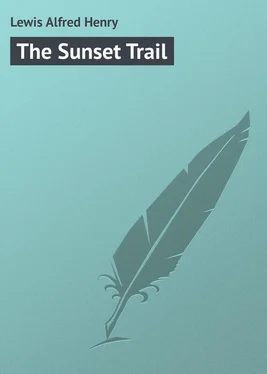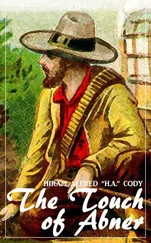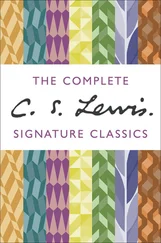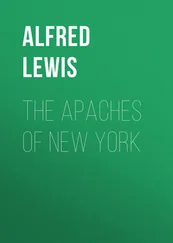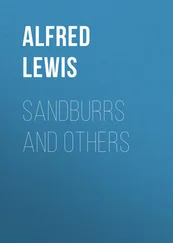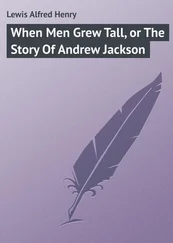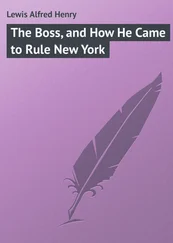Alfred Lewis - The Sunset Trail
Здесь есть возможность читать онлайн «Alfred Lewis - The Sunset Trail» — ознакомительный отрывок электронной книги совершенно бесплатно, а после прочтения отрывка купить полную версию. В некоторых случаях можно слушать аудио, скачать через торрент в формате fb2 и присутствует краткое содержание. Жанр: foreign_prose, foreign_adventure, на английском языке. Описание произведения, (предисловие) а так же отзывы посетителей доступны на портале библиотеки ЛибКат.
- Название:The Sunset Trail
- Автор:
- Жанр:
- Год:неизвестен
- ISBN:нет данных
- Рейтинг книги:5 / 5. Голосов: 1
-
Избранное:Добавить в избранное
- Отзывы:
-
Ваша оценка:
- 100
- 1
- 2
- 3
- 4
- 5
The Sunset Trail: краткое содержание, описание и аннотация
Предлагаем к чтению аннотацию, описание, краткое содержание или предисловие (зависит от того, что написал сам автор книги «The Sunset Trail»). Если вы не нашли необходимую информацию о книге — напишите в комментариях, мы постараемся отыскать её.
The Sunset Trail — читать онлайн ознакомительный отрывок
Ниже представлен текст книги, разбитый по страницам. Система сохранения места последней прочитанной страницы, позволяет с удобством читать онлайн бесплатно книгу «The Sunset Trail», без необходимости каждый раз заново искать на чём Вы остановились. Поставьте закладку, и сможете в любой момент перейти на страницу, на которой закончили чтение.
Интервал:
Закладка:
The Sunset Trail
INTRODUCTION
It was in my thoughts, as I wrote these chapters and arranged their sequence, to fix in types a phase of American existence that, within the touch of present time, has passed away. The West has witnessed more changes than has the East. The common impression, and one to which all Americans are bred, leaves paleface Western occupation to a modern day. Whenever one’s thought wanders to what is old in this country one inevitably sets his face towards the East.
None the less, this feeling of an Eastern as an earlier settlement is error. In New Mexico and Arizona, while exploring an ancient Spanish church or considering some palace of sun-dried mud with a sixteenth-century origin, it will begin to press upon one how the East, after all, is but the younger theatre of European endeavour in this continent. Also, an odd feeling will grow, as one reflects that more than a half century before Winthrop and Standish and Bradford and Alden and those other stern and solemn ones, came ashore on Plymouth Rock, Santa Fé was a bustling capital – a centre of agriculture, of mining, of flocks and of herds.
St. Augustine is said to be the first founded town within the frontiers of this country, as the same are made and laid to-day. And yet it is in warm dispute, with a deal to tell on the New Mexican side of the question, if Santa Fé be not the age equal of her sister of the Everglades. Certainly, and say the most disappointing thing for Santa Fé, there was a no greater space than two or three years to fall between.
Considered as regions, Florida versus New Mexico, the latter should be the older. In its settlement, that stretch lying between Santa Fé and San Francisco, and south to the Rio Grande and the now North Mexican line, was in a fairly populous and flourishing condition three centuries and more ago. To say “New Mexico” or “Arizona” hath a far-off savage sound, and yet both were dominated of European influences and polka-dotted with many a white man’s town long years before Salem went hanging her witches or Pocahontas interfered to save the life of Smith. It was over three and one-half centuries ago that Coronado ransacked Colorado and Kansas for those “seven cities” and the gold he could not find.
In 1803 the first American trading expedition broke across the plains and entered Santa Fé. The expedition was planned by William Morrison, the grandfather of that Colonel William Morrison who, following Civil War, won fame as a House leader, and proposed to reform the tariff by horizontally reducing it. Until the Morrison trade invasion of New Mexico, the West in its European complexion had been furnished by the Spanish. Also, about this time the English and Scotch, with the Canadian French to aid them, came pushing southward and westward from British Columbia in a search for furs.
The fur trade grew apace. Beavers were first the purpose, then buffaloes, with such peltry folk as bears and wolves and foxes and otters and muskrats to be their incident. For fifty years the beaver was the great source of Western wealth; then came the buffalo to roundly cover twenty-five years. After that, the cattle; to be followed by the railway and the farm.
If one were to catalogue those human influences that have dealt with the West, the count in its procession would run somewhat like this: There was the Indian occupation – an occupation that has never wholly given way. In the sixteenth century, say in 1550, came the Spaniard with what we call “civilisation” and the Indians call “devilry,” to colour the control, and hold a West’s directing rein, for two hundred and seventy-five years. Then befell the English-speaking invasion from the sunrise side of the Mississippi. There was a beaver day, a buffalo day; and, covering both the beaver and the buffalo days, there was also a trader day, with its Santa Fé and Oregon trails.
On the heels of all these came the cattle day and the day of the herds, with the farm day slowly dawning. It is with that latter day, the cattle day, that I have dealt. In doing this I have seized on a real man and, in its tragedy at least, told what really happened. Speaking for its broader lines, this book is true, and there be scores who will recognise its incidents.
Alfred Henry Lewis. New York City, February, 1905.CHAPTER I – HOW IT MIGHT HAVE BEEN DIFFERENT
His baptismal name was William Barclay, but before the corn-coloured pencilling on his upper lip had foretold the coming of a moustache, he was known throughout that wide-flung region lying between the Platte and the Rio Grande, the Missouri and the Mountains, as Bat. This honour fell to the boyish share of Mr. Masterson because his quick eye, steady hand, and stealthy foot rendered him invincible against bears and buffaloes and other animals, ferae naturae , and gray oldsters of the plains were thereby reminded of a Batiste Brown who had been celebrated as a hunter in the faraway heroic days of Chouteau, Sublette, Bridger, and St. Vrain.
There is no such season as boyhood on the plains, folk are children one day, men the next, and thus it befell with Mr. Masterson. He owned, while yet his cheek was as hairless as an egg, primeval gravities and silences, and neither asked nor answered questions, neither took nor gave advice. Among his companions of the range he gained the reputation of one who “attends strictly to his own business”; and this contributed to his vogue and standing, and laid the bedplates of a popular confidence in Mr. Masterson.
Also, Mr. Masterson, being few of years and not without a dash of the artistic, was in his way a swell. His spurs were of wrought steel traced with gold, the handkerchief – an arterial red for hue – knotted about his brown throat was silk, not cotton, while his gray sombrero had been enriched with a bullion band of braided gold and silver, made in the likeness of a rattlesnake, fanged and ruby-eyed. This latter device cost Mr. Masterson the price of one hundred buffalo robes, and existed a source of wondering admiration from Dodge to the Pueblos.
As a final expression of dandyism, Mr. Masterson wore a narrow crimson sash wound twice about his waist, the fringed ends descending gallantly down his left leg. The sash had come from Mexico, smuggled in with a waggon load of Chihuahua hats, and when Mr. Masterson donned it, being privily a-blush to find himself so garish, he explained the same as something wherewith he might hogtie steers when in the course of duty he must rope and throw them. Doubtless the sash, being of a soft, reluctant texture and calculated to tie very tight into knots that would not slip, was of the precise best material with which to hogtie steers; but since Mr. Masterson never wore it on the range and always in the dance halls, it is suspected that he viewed it wholly in the light of a decoration.
Mr. Masterson’s saddle, as exhibiting still further his sumptuous nature, was of stamped leather; while his war-bags and leggings were faced with dogskin, the long black fell warranted to shed rain like a tin roof. The one thing wanting a least flourish of ornament was Mr. Masterson’s heavy, eight-square buffalo gun – a Sharp’s 50-calibre rifle.
And yet this absence of embellishment was not because of Mr. Masterson’s want of respect for the weapon; rather he respected it too much. A rifle was a serious creature in the eyes of Mr. Masterson, and not to be regarded as jewelry; to mount it with silver or inlay its stock with gold would have been as unbecoming as to encrust a prayer-book with diamonds. Mr. Masterson’s rifle’s name was Marie; and when abroad on the range he made remarks to it, and took it into his confidence, apropos of events which transpired as part of the day’s work.
When Mr. Dixon, for whom Mr. Masterson was killing buffaloes along the Canadian, told that young gentleman how his visiting sister and niece would pass a fortnight at the ’Dobe Walls, the better to realise a virgin wilderness in all its charms, Mr. Masterson made no comment. Behind his wordlessness, however, Mr. Masterson nourished a poor opinion of this social movement. At its best, the ’Dobe Walls, as well as the buffalo range of which it lived at once the centre and the ragged flower, was rude beyond description, and by no means calculated – so Mr. Masterson thought – to dovetail with the tastes of ladies fresh from Beacon Hill. Besides, Mr. Masterson was not satisfied as to the depth and breadth of what friendships were professed by certain Cheyennes, who hunted buffaloes in the neighbourhood of the Canadian, for their paleface brothers and sisters.
Читать дальшеИнтервал:
Закладка:
Похожие книги на «The Sunset Trail»
Представляем Вашему вниманию похожие книги на «The Sunset Trail» списком для выбора. Мы отобрали схожую по названию и смыслу литературу в надежде предоставить читателям больше вариантов отыскать новые, интересные, ещё непрочитанные произведения.
Обсуждение, отзывы о книге «The Sunset Trail» и просто собственные мнения читателей. Оставьте ваши комментарии, напишите, что Вы думаете о произведении, его смысле или главных героях. Укажите что конкретно понравилось, а что нет, и почему Вы так считаете.
